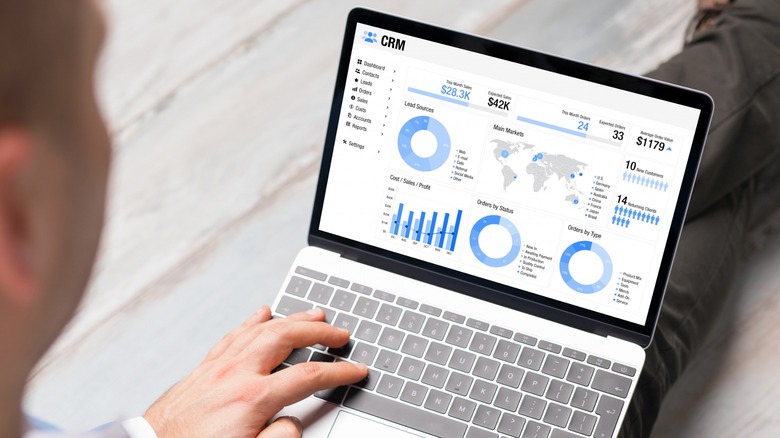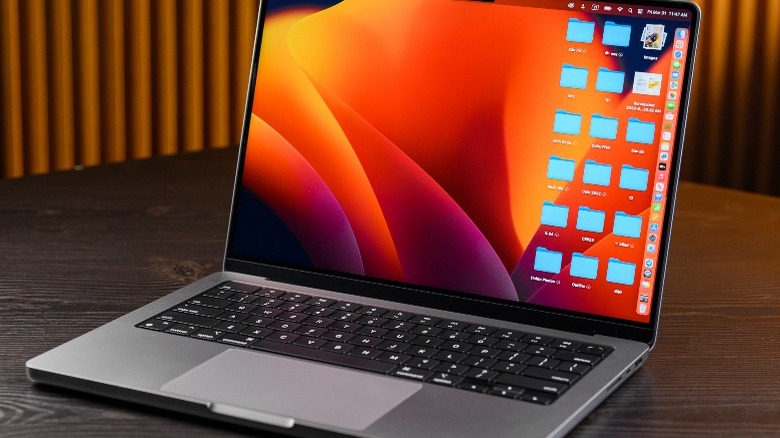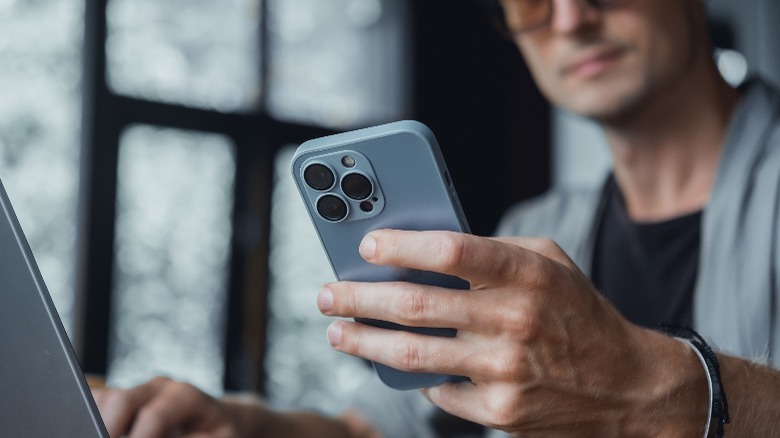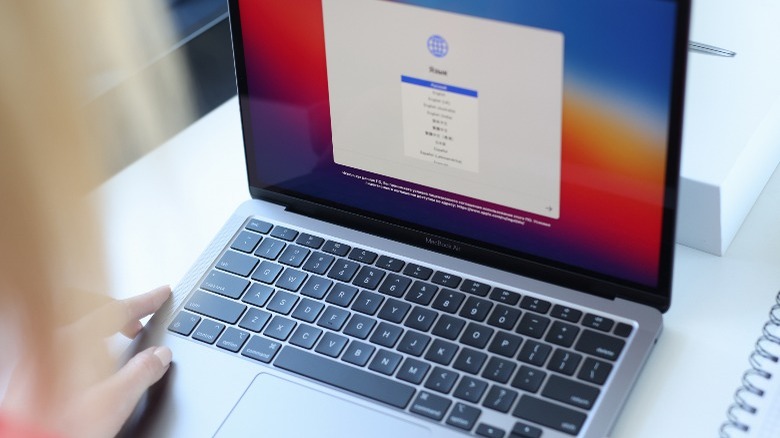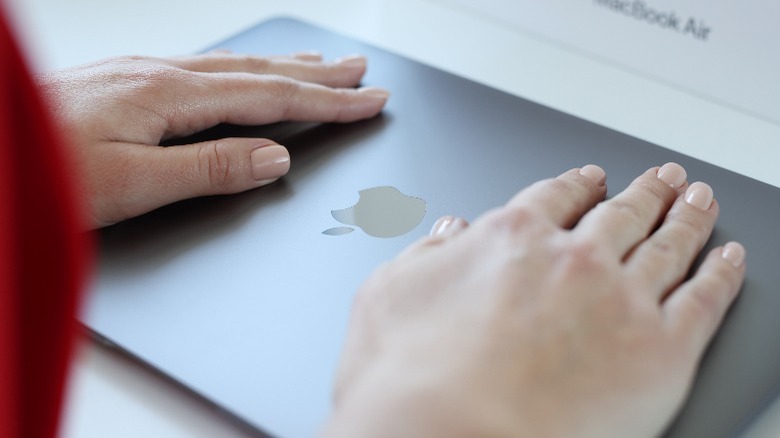4 Reasons You Should Switch From Windows To A MacBook (And One Reason Not To)
Whether you are on the search for a laptop to use for your school assignments or a device that you can use daily to browse the web, MacBooks are undeniably among the greatest machines you'll find in the market. In the last few years, macOS has seen significant upgrades. If you've been using Windows for a decade and think it's time for a switch, but are afraid of taking the plunge, it's normal to wonder whether the upgrade is worth it.
One thing is for certain, switching from Windows to a MacBook is a steep learning curve. It'll initially take you a bit of time to familiarize yourself with the ins and outs of the macOS operating system, like the switch from control to command. You will eventually get used to macOS and find it relatively easier to navigate once that does happen. Here are four reasons why you should take the bold step of ditching your Windows laptop for a MacBook, and one reason why you should stick to Windows.
You may resell your laptop later
Let's face it, a lot of us are looking to purchase a laptop that will last us a couple of years but retain resale value. One of the primary reasons why MacBooks are loved by many is that they retain their used market resale value much better than other consumer tech brands. Although MacBooks are a fairly expensive investment, they are built to last. If taken care of properly, they are also one of the few laptops that will maintain their elegant and minimalist look, even after years of use.
Purchasing an older MacBook with an Intel chip wouldn't be the best decision currently since Apple is bound to stop supporting them in a few years. This means that if you decide to resell it later on, you'll find it difficult to get a decent chunk of your investment back. However, since Apple released the M1 chip, the first chip of the M-series, in November 2020, you will be able to get great resale value if you've purchase a newer one.
You're already deep into the Apple ecosystem
The Apple ecosystem includes everything from the iPhone to the iPad, Apple TV, AirPods, Apple Watch, and of course, the Mac lineup. The different operating systems, macOS, iPadOS, and iOS, all share similar features. While you can use all of the above as standalone products, these Apple devices are designed to work together seamlessly. Although Microsoft and Samsung have attempted to create devices that work together as smoothly as Apple's devices do, they're yet to be entirely successful in doing so.
If you're thinking of investing in a MacBook, we recommend taking the plunge only if you already own either an iPhone or an iPad. Owning at least one of these devices will give you an upper hand, and you'll be able to use features like Continuity Camera, which allows you to use your iPhone or iPad as a webcam for your Mac. Similarly, you can also enjoy easy and quick file transfers using AirDrop.
One of the greatest parts of the Apple ecosystem is the fact that you can initiate a task on another device, and pick up where you left off on another. Of course, you need to be signed into the same Apple ID account and have features like Handoff enabled on all your devices to make it possible. Given that you have Handoff enabled on your devices, and Wi-Fi and Bluetooth turned on, the ecosystem also has a feature that makes it possible to copy content on one Apple device and paste it to another. While these may seem like minor features, they help boost your productivity significantly and help you save tons of time in the long run.
You're looking to work on the go
If you need to sprint from one part of your college's campus to the other or prefer working in cafes, it's best to purchase a sleek and lightweight device. Fortunately, MacBooks, whether you get an Air or Pro, fall under the lightest laptops you could purchase. The 13-inch MacBook M2 Air only weighs 2.7 pounds, which means that you can easily slide it into your backpack and get started with your day.
Battery life is another factor you should take into consideration when purchasing a laptop. Unfortunately, Windows laptops don't have the best reputation when it comes to battery life. On the other hand, MacBooks promise incredible battery life and you'll often be able to get through an entire's day worth of work without having to worry about your battery percentage. One of the primary reasons why the newer MacBooks live up to their battery life is due to the Apple Silicon chip they use.
Since Apple Silicon is Apple's tailored chipset, the company has the power to crank up the chipset's efficiency, compared to the Intel and AMD chips you'll find in PCs. Apple claims that the M3 MacBook Pro can handle up to 22 hours of video playback and 15 hours of wireless web browsing. Similarly, the M2 Air boasts 18 hours of video playback and 15 hours of wireless web surfing. Thanks to the M-series chipsets, it's safe to say that you can leave your power adapter at home when you need to work on the go.
You want a laptop that'll last
Technology is advancing rapidly. Apple has a history of releasing a newer device just about every year. Even if you decide to sell your MacBook before purchasing a new one, it's impossible to get a hundred percent of your initial investment back. At most, you'll find yourself needing to upgrade to a newer device four to five years after your purchase. Given their price, MacBooks are known to be quite durable laptops.
Unless you toss your MacBook into a bag without protection and drop it around everywhere, they're quite resistant to dents and scratches due to their aluminum design. Another reason why MacBook owners can go years without upgrading is due to macOS's long-term OS support. At the moment, macOS Sonoma supports the 2018 MacBook Air and Pro.
Essentially, this means that the oldest MacBooks supported currently are the ones released in 2018. Unfortunately, they won't be receiving the next macOS update. This means that you can expect your Mac to receive around six years of software updates, which is fairly ideal.
If you're on a budget, stick to Windows
Whether you're getting a MacBook Air or a Pro, a refurbished one from Apple's website, a new or used one – one thing remains constant. Apple devices usually tend toward the premium end of the spectrum. While the adjusting period is something you can get over, not everyone has hundreds of dollars lying around. The 13-inch MacBook M2 Air starts at $1,099, the 15-inch variant retails for $1,299, and the 13-inch M1 Air starts at $990. Keep in mind that all three of these quotes are for the most basic configuration: 8 GB of RAM and 256 GB of internal storage.
Similarly, the base model of the 14-inch M2 Pro, with 8 GB of RAM and 512 GB of internal storage, retails for $1,599, The 16-inch M2 Pro's base model, with 16 GB of RAM and 512 GB of internal storage is $2,499. Although the price varies depending on the configuration you have in mind, it's certainly disappointing how the MacBook's base configurations don't match up with the amount you pay. Unfortunately, neither RAM nor internal storage can be upgraded later on.
While you can get an external SSD, there's nothing you can do to increase your RAM, other than opting for another configuration while purchasing. Apple is yet to introduce a MacBook with touchscreen functionality. So, if you're looking for a laptop that can support a stylus, it's better to opt for a 2-in-1 convertible or get an iPad with a Magic Keyboard. All in all, it's important to know that while some may find paying a premium price for a MacBook worth it, you may not. It all comes down to what you're looking for, and what matters to you as a consumer.
